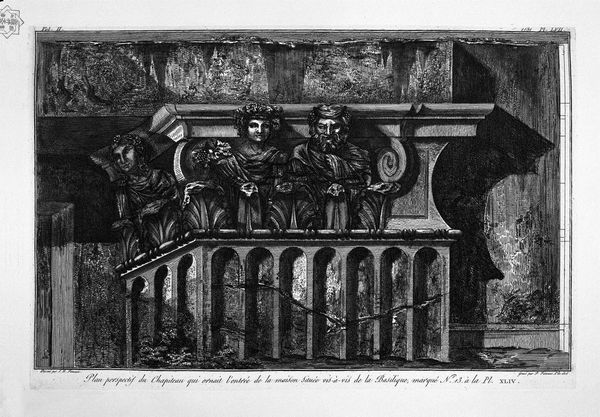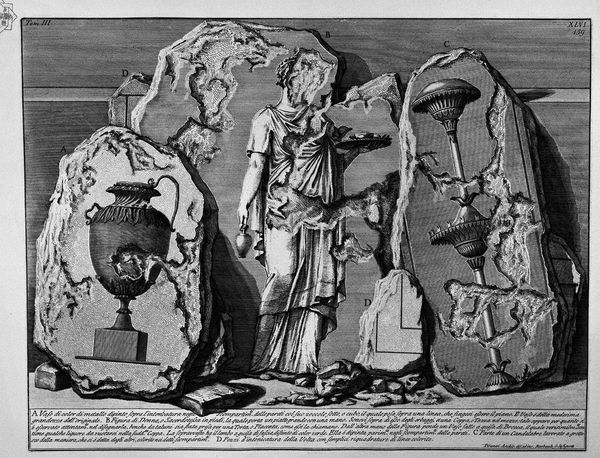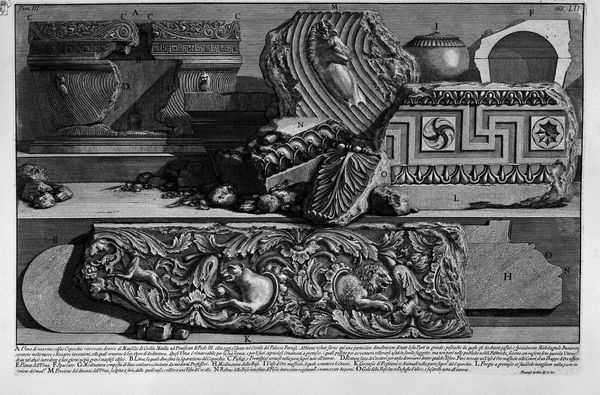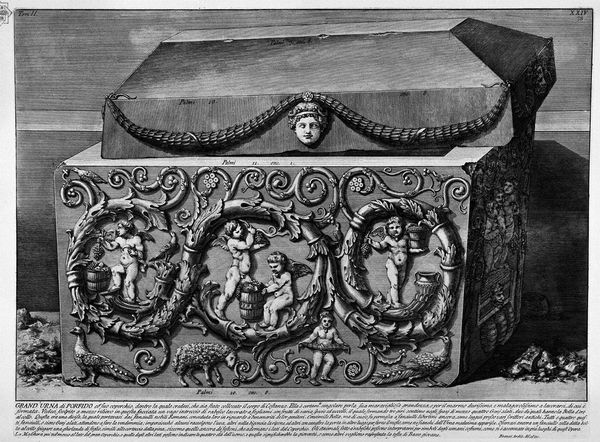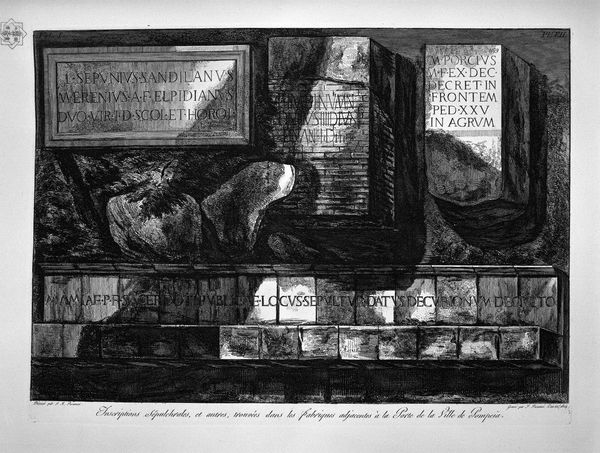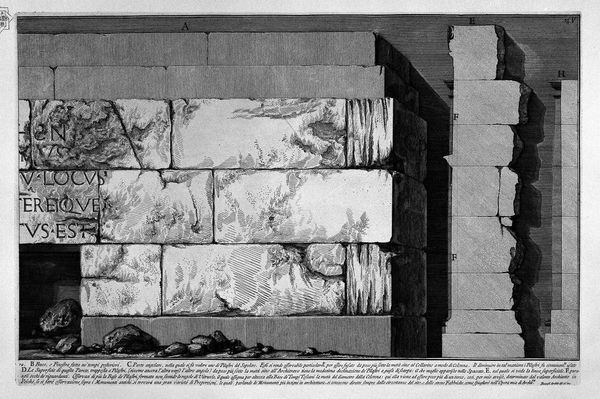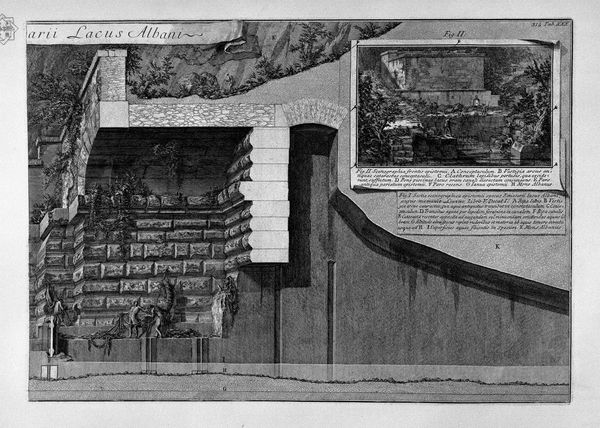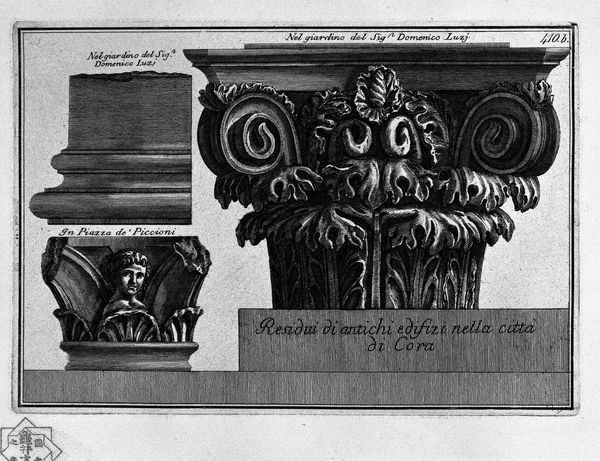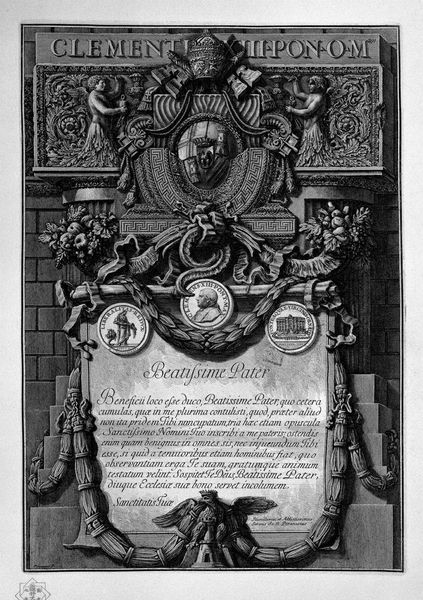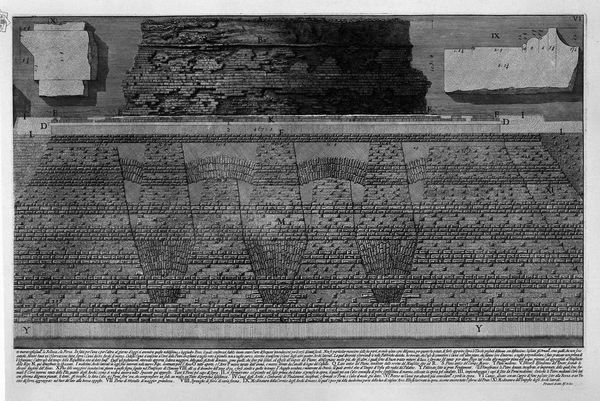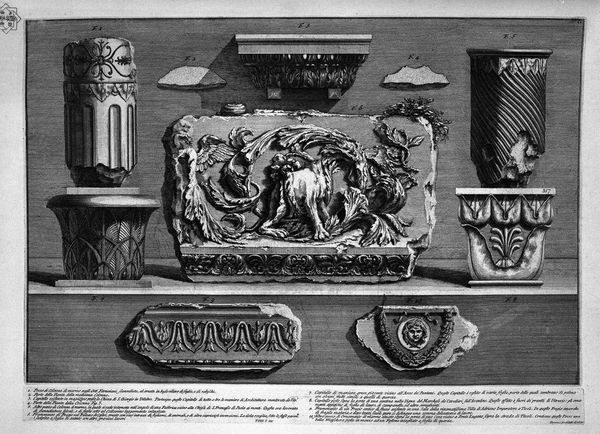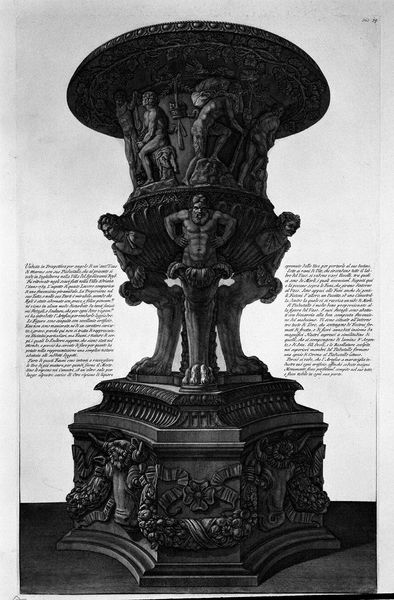
drawing, print, etching, engraving, architecture
#
drawing
#
neoclacissism
# print
#
etching
#
pencil sketch
#
landscape
#
form
#
geometric
#
line
#
history-painting
#
engraving
#
architecture
Copyright: Public domain
Giovanni Battista Piranesi made this etching of the pedestal and base of Trajan's Column in the 18th century. The image is rendered with incredible detail, a testament to the intaglio process where lines are incised into a metal plate, inked, and then pressed onto paper. Consider how the material and process influenced the appearance of this print. Piranesi meticulously depicts the layered relief carvings that wrap around the column's base. The weight and density of the stone are cleverly evoked through the use of shadow and line. Piranesi was engaging with a long lineage of skilled printmakers, and Trajan's Column itself is a product of Roman engineering and artistry, erected to celebrate imperial power and military conquest. This image also reflects the labor involved in both the original monument's creation, and Piranesi's own redrawing, and reinterpreting, of it. By focusing on the materials, making, and historical context, we can fully understand the layers of meaning embedded within the pedestal and base of Trajan’s Column, challenging distinctions between historical document and artistic interpretation.
Comments
No comments
Be the first to comment and join the conversation on the ultimate creative platform.
